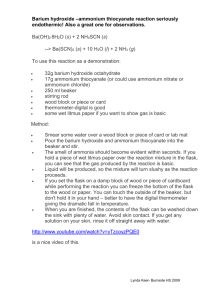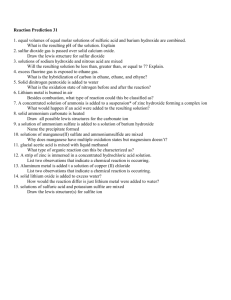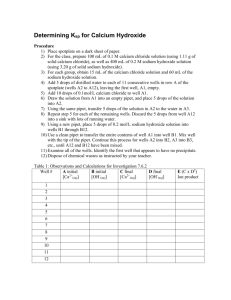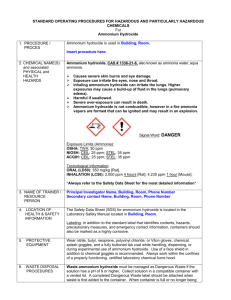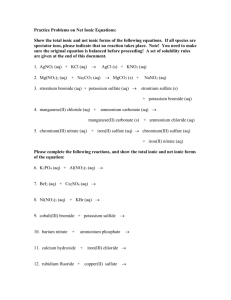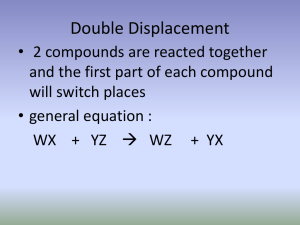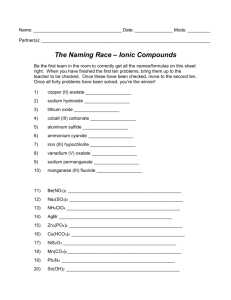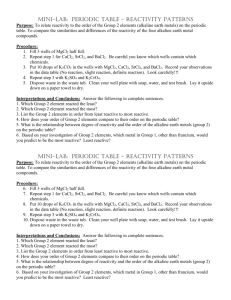Reactivity Lab
advertisement
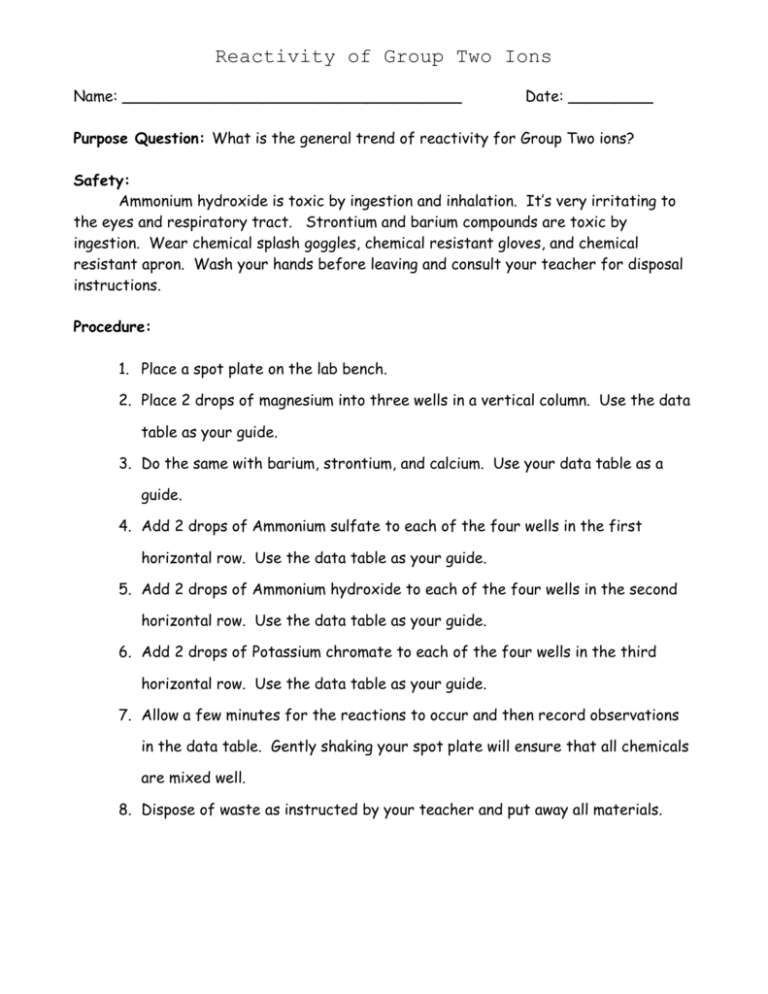
Reactivity of Group Two Ions Name: ____________________________________ Date: _________ Purpose Question: What is the general trend of reactivity for Group Two ions? Safety: Ammonium hydroxide is toxic by ingestion and inhalation. It’s very irritating to the eyes and respiratory tract. Strontium and barium compounds are toxic by ingestion. Wear chemical splash goggles, chemical resistant gloves, and chemical resistant apron. Wash your hands before leaving and consult your teacher for disposal instructions. Procedure: 1. Place a spot plate on the lab bench. 2. Place 2 drops of magnesium into three wells in a vertical column. Use the data table as your guide. 3. Do the same with barium, strontium, and calcium. Use your data table as a guide. 4. Add 2 drops of Ammonium sulfate to each of the four wells in the first horizontal row. Use the data table as your guide. 5. Add 2 drops of Ammonium hydroxide to each of the four wells in the second horizontal row. Use the data table as your guide. 6. Add 2 drops of Potassium chromate to each of the four wells in the third horizontal row. Use the data table as your guide. 7. Allow a few minutes for the reactions to occur and then record observations in the data table. Gently shaking your spot plate will ensure that all chemicals are mixed well. 8. Dispose of waste as instructed by your teacher and put away all materials. Data: Record observations in the circles in the table below. List any colors formed. If any precipitates form, use the abbreviation “PPT”. If no reaction at all occurs, use “NR”. Be sure to make careful observations, since the reactions with aqueous ammonium hydroxide may be quite difficult to see. Magnesium (Mg) Calcium (Ca) Strontium (Sr) Barium (Ba) 1. 2. 3. 4. 5. 6. 7. 8. 9. 10. 11. 12. Ammonium Sulfate (NH4)2SO4 Ammonium Hydroxide (NH4)OH Potassium Chromate K2CrO4 Conclusion Questions: 1. A color change or the formation of a precipitate is an indication that a reaction has occurred. Which Group Two metal showed a reaction with the most compounds? 2. Which Group Two metal was the least reactive? _____________ 3. List the four Group Two metals in order from least reactive to most reactive. 4. Compare this order to the position on the periodic table and write a general statement regarding the reactivity and the position in the group. 5. Which Group One element would you expect to be the most reactive? ______ 6. Which Group One element would you expect to be the least reactive? ______
